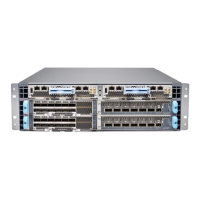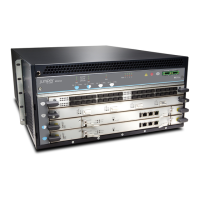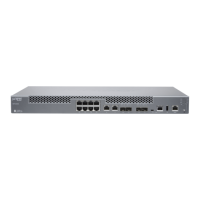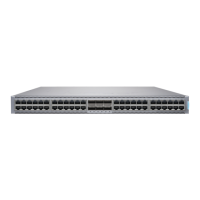CAUTION: To prevent electrostac discharge (ESD) damage to the transceiver, do not
touch the connector pins at the end of the transceiver.
7. Using your ngers, grasp the body of the transceiver and pull it straight out of the port.
8. Place the transceiver in the anstac bag or on the anstac mat placed on a at, stable surface.
9. Place the dust cover over the empty port.
Connect a Fiber-Opc Cable to an Opcal Transceiver in an MX10004
Router
Before you connect a ber-opc cable to an opcal transceiver installed in the MX10004 router, ensure
that you have taken the necessary precauons for safe handling of lasers (see "Laser and LED Safety
Guidelines and Warnings" on page 253).
To connect a ber-opc cable to an opcal transceiver in an MX10004 router:
LASER WARNING: Do not look directly into a ber-opc transceiver or into the ends of
ber-opc cables. Fiber-opc transceivers and ber-opc cables connected to
transceivers emit laser light that can damage your eyes.
LASER WARNING: Do not stare into the laser beam or view it directly with opcal
instruments even if the interface has been disabled.
1. If the ber-opc cable connector is covered by a rubber safety cap, remove the cap. Save the cap.
2. If the opcal transceiver is covered by a rubber safety cap, remove the cap. Save the cap.
3. Insert the cable connector into the opcal transceiver.
4. Secure the cables so that they do not support their own weight. Place excess cable out of the way in
a neatly coiled loop. Placing fasteners on a loop helps cables maintain their shape.
CAUTION: Do not bend ber-opc cables beyond their minimum bend radius. Bending
the cables beyond their minimum bend radius can damage the cables and cause
problems that are dicult to diagnose.
209

